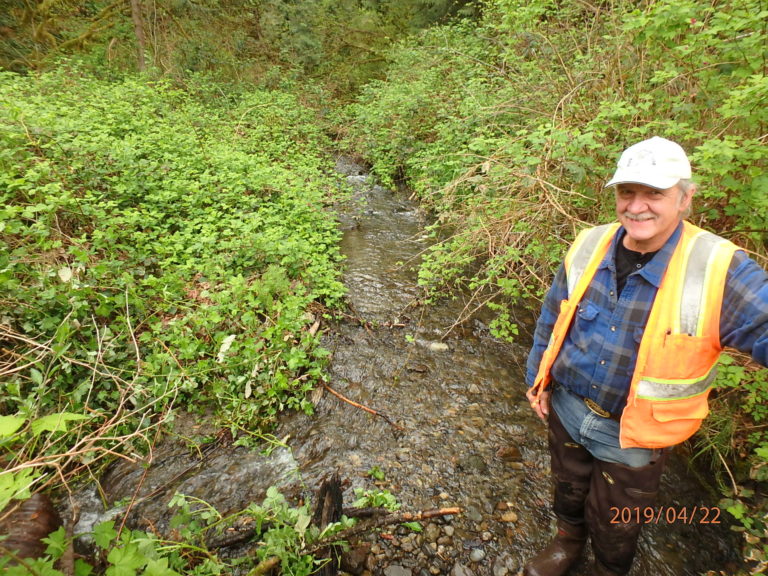

Pre-spawning mortality (PSM) is an emerging toxics issue impacting many of Washington’s urbanized or developed watersheds. Where it occurs, adult coho salmon returning to freshwater die before they are able to spawn completely. The cause of PSM was recently identified as toxic road runoff associated with chemicals leaching out of automobile ‘tire dust’ which wears off tires during the normal wear and tear of driving.
In fall of 2021 and 2022, Wild Fish Conservancy completed weekly spawning surveys in five West Sound watersheds in Kitsap and Peirce Counties that represent a range in road density and stormwater inputs. Survey watersheds, which included Rocky Cr., Minter Cr., McCormick Cr., Burkey Cr., and Clear Cr., were prioritized with assistance from WDFW, NOAA’s NW Fisheries Science Center, and the Suquamish Tribe.
During the surveys, Wild Fish Conservancy staff identified carcasses, redds, and live fish, and carefully inspected the riparian area for signs of carcasses dragged away from streams by animals such as otter, dog, raccoon, bear, opossum and coyote. Crews were also vigilant for the wafting odor of a rotting salmon carcass, prompting a heightened search in those areas.
Spawning success was determined by examining female carcasses. The eggs of female salmon are contained within two separate skeins within the body cavity. If these skeins appeared equal in size, full, firm, and intact, the fish was considered un-spawned. If eggs were retained by the fish, field crews estimated the percentage remaining. Neither the spawning success of males or significantly scavenged female carcasses were included in analysis.
Location | Start Date |
|---|---|
Kitsap and Pierce County, Clear, Burley, Minter, McCormick and Rocky Creeks | 10/20/2021 |
Project Type | Completion Date |
|---|---|
Spawning Survey | 07/31/2023 |
Identifying and prioritizing locations where pre-spawn mortality occurs allows us to prioritize locations where improving stormwater infrastructure will prevent continual damage to biota in streams.
Primary Habitats Impacted By Project: | Managing Agency/ Organization: |
|---|---|
Riparian Stream Channel, Urban Stream Channel | Wild Fish Conservancy |
Project Contact: | Budget or Project Cost: |
|---|---|
Jamie Glasgow |
Funding Sources: | Partners: |
|---|---|
Washington Department of Ecology, Puget Sound NEP, Stormwater Initiative |
Join our mailing list to recieve important updates on our work, the latest wild fish news, & opportunities to take action to support wild fish.
This site is protected by reCAPTCHA and the Google Privacy Policy and Terms of Service apply.
Wild Fish Conservancy is recognized as a 501(c)3 non-profit by the IRS